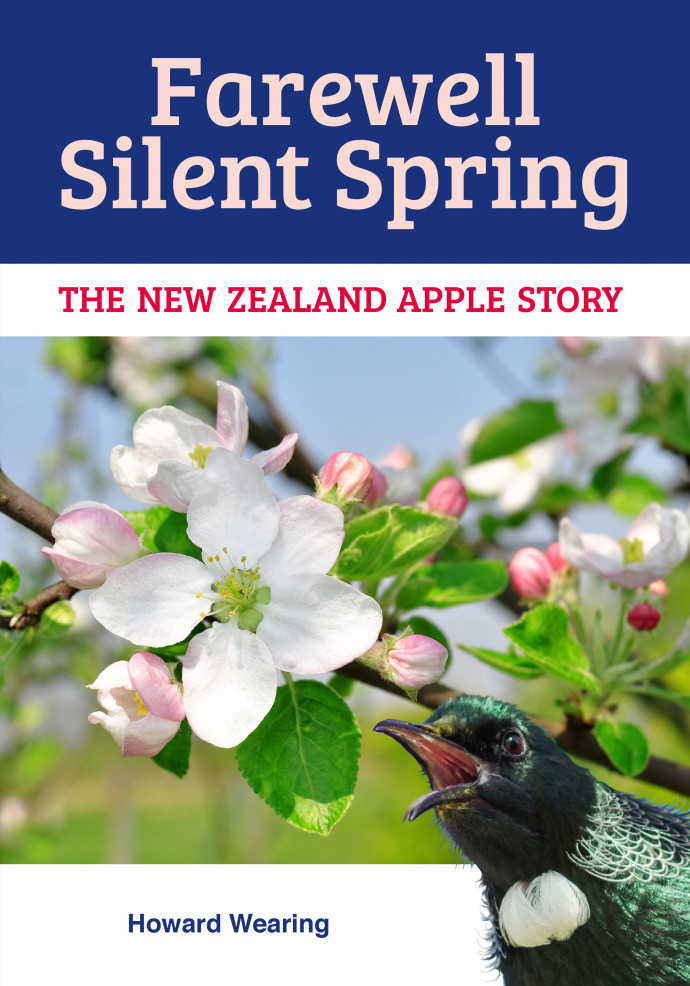Farewell Silent Spring

Dr Howard Wearing FRSNZ has devoted his scientific career to research in insect ecology, and the development and implementation of integrated pest management programmes, and these topics lie at the heart of his new book.
This book contains a vast number of images and descriptions of pipfruit pests and of natural enemies of plant-feeding mites, is the culmination of a lifetime’s work on the ecological concepts of Integrated Pest Management (IPM) from early beginnings in the apple industry in New Zealand to the present day realisation of Integrated Fruit Production (IFP) and Apple Futures which provides New Zealand apple growers and marketers with a competitive advantage in overseas export markets.
Rachel Carson’s book Silent Spring published in 1962 had highlighted concern about the risks from pesticides in agriculture. The first three chapters of Howard Wearing’s book provide an essential introduction into the necessity to reduce the use of toxic broad-spectrum pesticides in pipfruit orchards in New Zealand from the situation prior to 1960, through the initial limited options available within research programmes, and finally the ecological research programme set up as the result of the author’s arrival in New Zealand and his appointment to the programme in 1967.
The book provides details of the ecological research programme on codling moth, lightbrown apple moth, San José scale, and phytophagous mites during the initial period in Nelson, followed by the disruption in 1973 due to the relocation of the Entomology Division of the Department of Scientific and Industrial Research (DSIR) headquarters to Auckland, and the dispersal of entomologists to other regions of New Zealand.
Although growers continued to use OP insecticides, details are provided for a reduction in their use by the identification of insect pheromones for use in trap monitoring and phenology modeling, allowing sprays to be applied only when necessary for codling moth and leafroller control. At this time (1974–1995) the increase in OP resistance resulted in the need for research to provide safeguards for grower spray programmes until more sustainable IPM was developed. From the research, the concept of pesticide resistance management was developed.
The book describes how, during the period 1973–1995, biologically based IPM was developed for New Zealand piprfruit production. Codling moth and leafrollers were the primary targets, and sex pheromones were used initially as monitoring tools. Later, technology was developed for mating disruption. Codling moth granulosis virus became available commercially, and the introduced parasitoids of leafroller started to make an impact. The benefits of overseas research on codling moth and the introduction of insect growth regulators enabled biologically based IPM to become a reality. This Chapter also contains a brief overview of research progress, and outlines the frustrations caused by changes in the Government funding model to competitive funding, which caused increased difficulties in collaboration between research organisations.
This magnificent book traces the pathway of a lifetime of research into the development of IFP for the pipfruit industry in New Zealand. Fittingly, Howard Wearing dedicates the book to his wife Anja, who unwaveringly supported him during his research career, particularly through the frustrating times of changing funding from a collaborative to a competitive environment, and to Dr Elsie Collyer who inspired him to develop and implement his ‘dream’ for a biologically based integrated pest management system for the pipfruit industry. It is a story that those interested in sustainable food production should read as it provides a mine of information for both professionals and students of entomology, pest management, and horticulture in general.
Wearing, Howard (2019). Farewell Silent Spring – The New Zealand Apple Story (NZ Plant protection Society), pp.278. ISBN; 978-0-473-48730-0.
